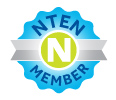OK, I fully admit I haven't exhaustively researched this, but Network for Good is trying to get people to use it's API to give to charities. OK, good thing to allow more websites like change.org to spring up and for charities to get a nice little surprise check in the mail.
I read this and kinda wondered:
Q: If my project does not win and I want to purchase the Network for Good API for use beyond June 30th, what do I do?First, their API is not open. Not on the web anywhere. I mean publish the API and limit calls to 10 a month if they are unpaid. Not an insurmountable technical challenge.
A: Organizations interested in purchasing a developer license for use beyond June 30, 2008 should email customerservice@networkforgood.org. The cost ranges from $6,000 - $9,000 depending on the type of organization, the range of web services being used and the level of customization.
But more to the point, if you really want to spread things virally, why would you use such an old school model? I find it kind of amusing that it was founded by AOL and Yahoo and, like the corporations that spawned it, it is having trouble staying in the technological here and now.
Finally a couple of truely radical thoughts. NfG charges a 4.75% fee on transactions. All numbers are assuming ~$40M in annual donations (they did $35M in 2006)
(1) Switch to PayPal. Save $740K. Keep $200-250K and the float to handle the costs on mailing, etc.
(2) Make a deal with Google which offers NPO free processing. Save $1.9M. Keep $500K for expenses and send an additional $1.4M to the sector.
Maybe keep another $100K of the savings and make the API free.
When NfG released the widgets, I thought they probably got web 2.0. With there approach to APIs, however, I need to rethink that conclusion.

